Themed collection Machine Learning and Data Science in Materials Design

Machine learning and data science in materials design: a themed collection
Guest Editors Andrew Ferguson and Johannes Hachmann introduce this themed collection of papers.

Mol. Syst. Des. Eng., 2018,3, 429-430
https://doi.org/10.1039/C8ME90007H
Can machine learning identify the next high-temperature superconductor? Examining extrapolation performance for materials discovery
Traditional machine learning (ML) metrics overestimate model performance for materials discovery.
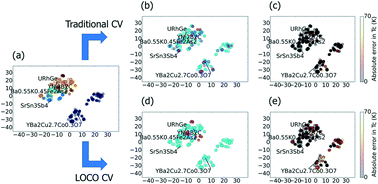
Mol. Syst. Des. Eng., 2018,3, 819-825
https://doi.org/10.1039/C8ME00012C
Correlative analysis of metal organic framework structures through manifold learning of Hirshfeld surfaces
We demonstrate the use of non-linear manifold learning methods to map the connectivity and extent of similarity between diverse metal–organic framework (MOF) structures in terms of their surface areas by taking into account both crystallographic and electronic structure information.
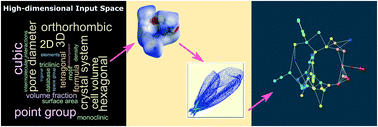
Mol. Syst. Des. Eng., 2018,3, 826-838
https://doi.org/10.1039/C8ME00014J
A simple constrained machine learning model for predicting high-pressure-hydrogen-compressor materials
Here we present the results of using techno-economic analysis as constraints for machine learning guided studies of new metal hydride materials.
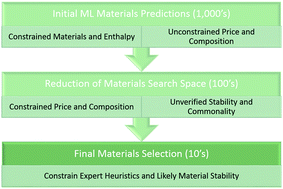
Mol. Syst. Des. Eng., 2018,3, 509-517
https://doi.org/10.1039/C8ME00005K
Tuning the molecular weight distribution from atom transfer radical polymerization using deep reinforcement learning
Combination of deep reinforcement learning and atom transfer radical polymerization gives precise in silico control on polymer molecular weight distributions.
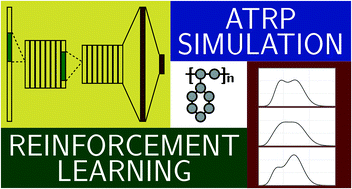
Mol. Syst. Des. Eng., 2018,3, 496-508
https://doi.org/10.1039/C7ME00131B
Classification of spatially resolved molecular fingerprints for machine learning applications and development of a codebase for their implementation
Direct mapping between material structures and properties for various classes of materials is often the ultimate goal of materials researchers.
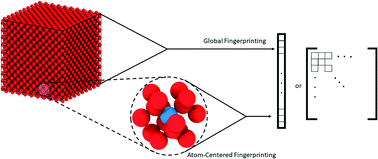
Mol. Syst. Des. Eng., 2018,3, 431-441
https://doi.org/10.1039/C8ME00003D
Enriched optimization of molecular properties under constraints: an electrochromic example
We present a deterministic optimization procedure of molecular properties that ensures diverse coverage of the given chemical compound search space.
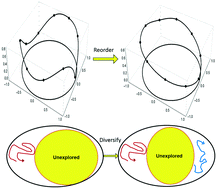
Mol. Syst. Des. Eng., 2018,3, 485-495
https://doi.org/10.1039/C7ME00126F
Understanding structural adaptability: a reactant informatics approach to experiment design
The structural and electronic adaptability of a vanadium selenite framework is determined using cheminformatics data and machine learning algorithms.
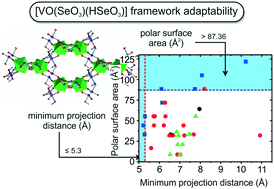
Mol. Syst. Des. Eng., 2018,3, 473-484
https://doi.org/10.1039/C7ME00127D
Molecular dynamics simulations and PRISM theory study of solutions of nanoparticles and triblock copolymers with solvophobic end blocks
Hybrid materials composed of inorganic nanoparticles (NPs) and amphiphilic block copolymers (BCPs) combine desirable properties of NPs with the rich phase behavior of BCPs, making them attractive for use in biomaterials, responsive materials for sensing, active materials in robotics, etc.
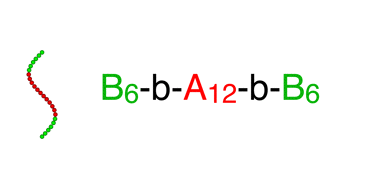
Mol. Syst. Des. Eng., 2018,3, 453-472
https://doi.org/10.1039/C7ME00128B
Deep learning for chemical reaction prediction
We describe a deep learning-based system for predicting chemical reactions and identifying experimentally-observed masses.

Mol. Syst. Des. Eng., 2018,3, 442-452
https://doi.org/10.1039/C7ME00107J
Statistical models are able to predict ionic liquid viscosity across a wide range of chemical functionalities and experimental conditions
Herein we present a method of developing predictive models of viscosity for ionic liquids (ILs) using publicly available data in the ILThermo database and the open-source software toolkits PyChem, RDKit, and SciKit-Learn.
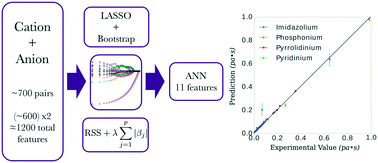
Mol. Syst. Des. Eng., 2018,3, 253-263
https://doi.org/10.1039/C7ME00094D
About this collection
From MSDE
Guest Edited by Professor Andrew Ferguson (University of Illinois at Urbana-Champaign, USA) and Professor Johannes Hachmann (University at Buffalo, USA), this collection showcases the latest research leveraging data analytics and machine learning approaches to guide the design of hard, soft, and biological materials with tailored properties, function and behaviour.
Data-driven modelling and machine learning have opened new paths to the understanding, engineering, and design of materials. Physical laws define the fundamental connection between materials chemistry and emergent structure and function, and theoretical or numerical models based on these laws provide a route to quantitative predictions.
The inverse problem, however, is far more challenging: reverse engineering a material with particular functionality or behaviour. Approaches and tools from data sciences and machine learning are proving enormously successful in addressing this task, ultimately informing experimental synthesis and characterization efforts of novel materials, compounds, and reactions.